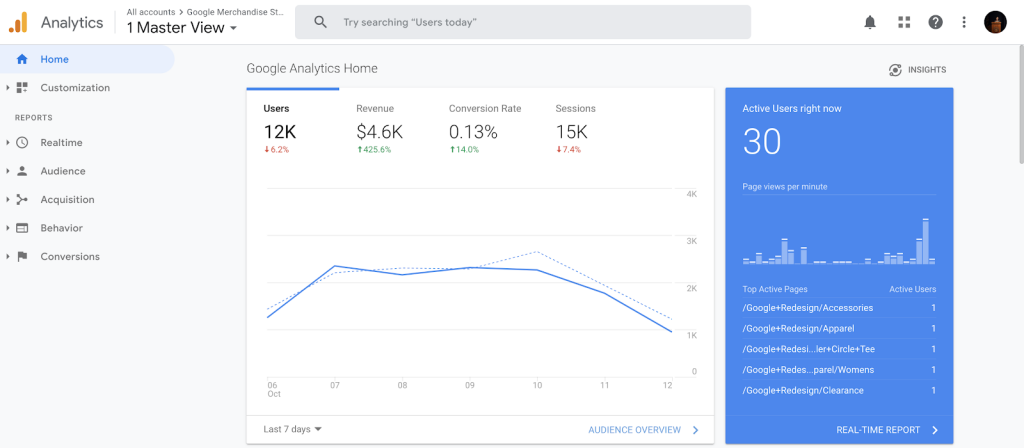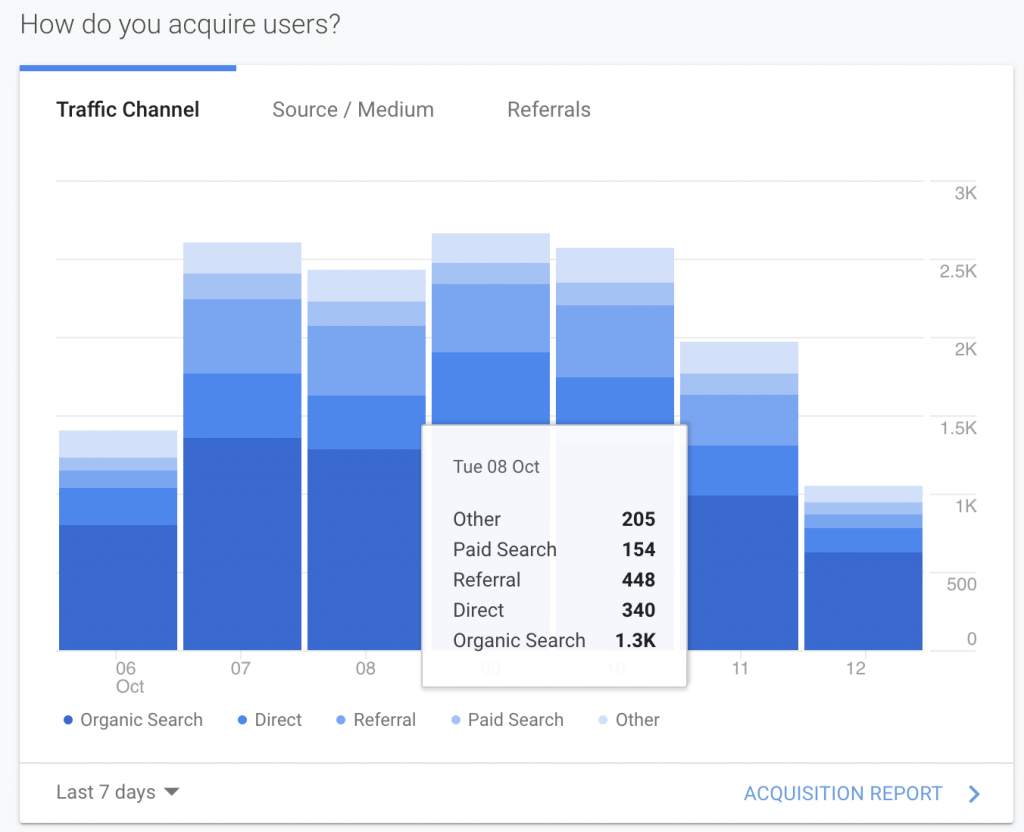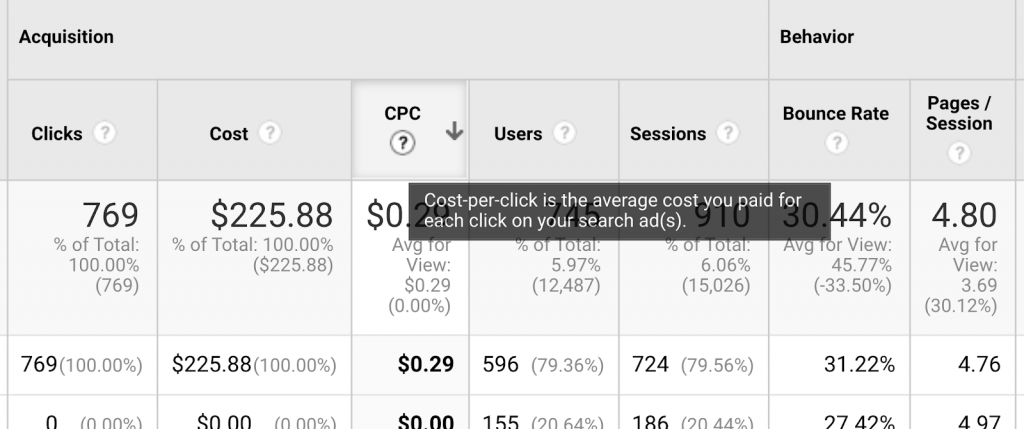blog»SEO»Traffic Generation Metrics – Metrics in Digital Marketing

Traffic Generation Metrics – Metrics in Digital Marketing
2019/10/21
You can read this article in about 9 minutes
Traffic Generation Metrics
Traffic Generation Metrics help you determine where visitors come from and give you insight into your traffic generation activity. They also give you insight into your Search Engine Optimization (SEO) and Search Engine Marketing (SEM) performance.
Today let’s look at important traffic generation metrics including:
- Overall Website Traffic
- Traffic Sources
- Click-through-Rate (CTR)
- Pay-Per-Click (PPC) and Cost-Per-Click (CPC)
Overall Website Traffic:
Your website is the first touchpoint and the face of your company. Therefore, all of your digital marketing efforts will likely direct towards your website. Initially, individual campaigns may focus on different aspects of your organizational goal (like building brand awareness or social media reach), but these goals will ultimately align with converting users on your website. Therefore, tracking your overall website metrics is the best way to monitor your marketing campaign’s health.

If you start seeing a sudden increase in your website traffic, try to find what happened in the past few days to explain that increase through your website traffic metrics. Likewise, if you are losing web traffic, diagnose the problem. Maybe Google Search is penalizing you for something that you are unaware of. Maybe you have a broken link. Maybe your website isn’t optimized for tablets or smartphones. A few tips on how to increase or improve your website traffic:
- Optimize your content (SEO)
- Create helpful and relevant content that resonates with your target market
- Use online advertising to your advantage (Google Ads, SEM)
- Leverage your social media to share your contents optimally and align your social goals with your website
These website metrics will help you understand the overall health of your website. Performance indicators like page views and unique visitors will give you a quick, broad understanding of your overall web performance.
Traffic Sources:
Traffic sources tell us where your customers are coming from. Did they arrive at our site via:
- A search engine (Google, Yahoo, Bing)?
- Social media (Facebook, Twitter, YouTube)?
- Directly (typing the URL into the browser)?
- Some other way?
It’s important to know where your customers are coming from because you can learn which channels to improve and where you are winning.

Traffic source examples:
- Organic Search: When users search for a certain keyword in the search engines, then click a link to visit a website.
- Direct: When users type your website’s URL directly in the browser (www.example.com) or when they have bookmarked your website previously and click that bookmark to visit.
- Referrals: When users visit your website through links from other websites. (Backlinks)
- Social: When users visit your website via a link from a social media platform.
- Paid Search: When users that visit your website due to advertising efforts you make with search engine companies. (Google Ads, Bing Ads, etc.)
Knowing exactly where your visitors are coming from will give you an understanding of what channels are working and what channels are not. This will also help you determine how to create content specific to those channels where you are most engaging to your clients. Then you can narrow down and focus on creating content that will benefit you as well as your customers.
Device Category
The device category also helps you understand your visitors. Knowing which devices your customers are using will help you pinpoint areas for improvement to boost conversions on your site. For example, modern mobile devices have become the preferred browsing tool for most of the web due to availability and ease-of-use. There is no one-size-fits-all solution for device category optimization, but it’s always best to future-proof your offerings by optimizing content for every type of major device (smartphones, tablets, desktops, large desktops).

Click-through-Rate (CTR)
CTR (Click-through-rate) is the ratio of how many people see your ad to how many people click it, so we use it when purchasing ads in search engines or social platforms. For example, we can see how certain keywords perform in SEO and optimize our ads spending.

An impression occurs every time someone sees your ad. While impressions are important, actual interactions lead to conversions.
Regarding Search Engine Advertising, Quality Score is a metric that Google and other search engines will provide you to help optimize CTR on your ads. It’s calculated based on algorithms that measure expected clickthrough rate, ad relevance, and landing page experience. Quality Score is “an estimate of the quality of your ads, keywords, and landing pages. Higher quality ads can lead to lower prices and better ad positions.” Quality score is provided because every search engines’ goal is to provide the most relevant content to its users.
Pay-Per-Click (PPC) and cost-Per-Click (CPC)
- Pay-Per-Click (PPC) is a type of marketing campaign where you set CPC prices.
- Cost-Per-Click (CPC) is how much money you are willing to pay for each click on your ad.
With PPC, you’re charged based on the clicks that you accrue on your ads that you’ve created through your Ads account.
It’s important to distinguish between these two metrics because they will help you determine what keywords are working and how relevant you are to your target audience in the search engine.

If done right, CPC can be extremely beneficial for your organization. However, CPC can also be extremely expensive if your ads are not performing well. Keeping track of the CPC metric will allow you to monitor when your ads stop being relevant or understanding if your ads are relevant to your target audience.